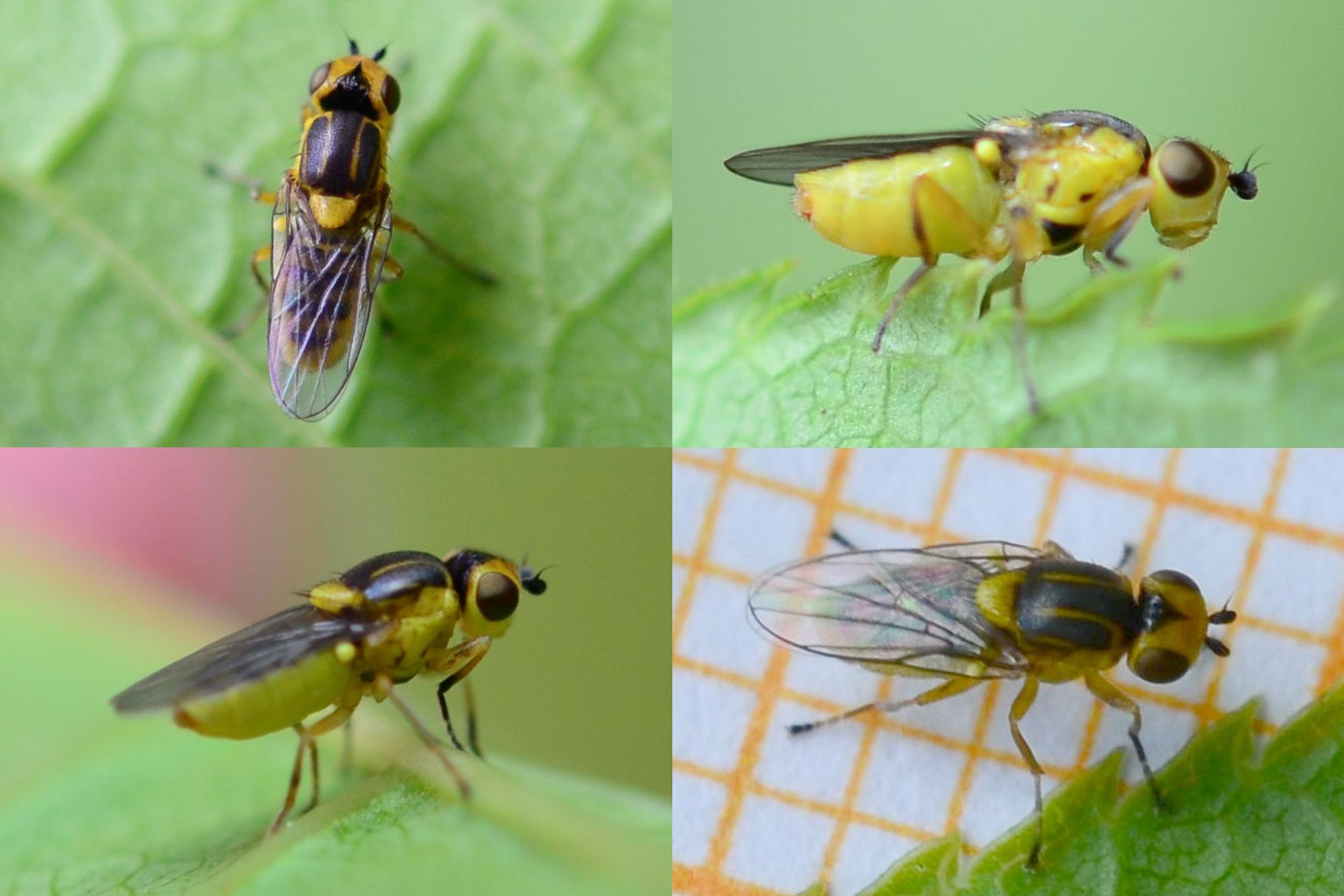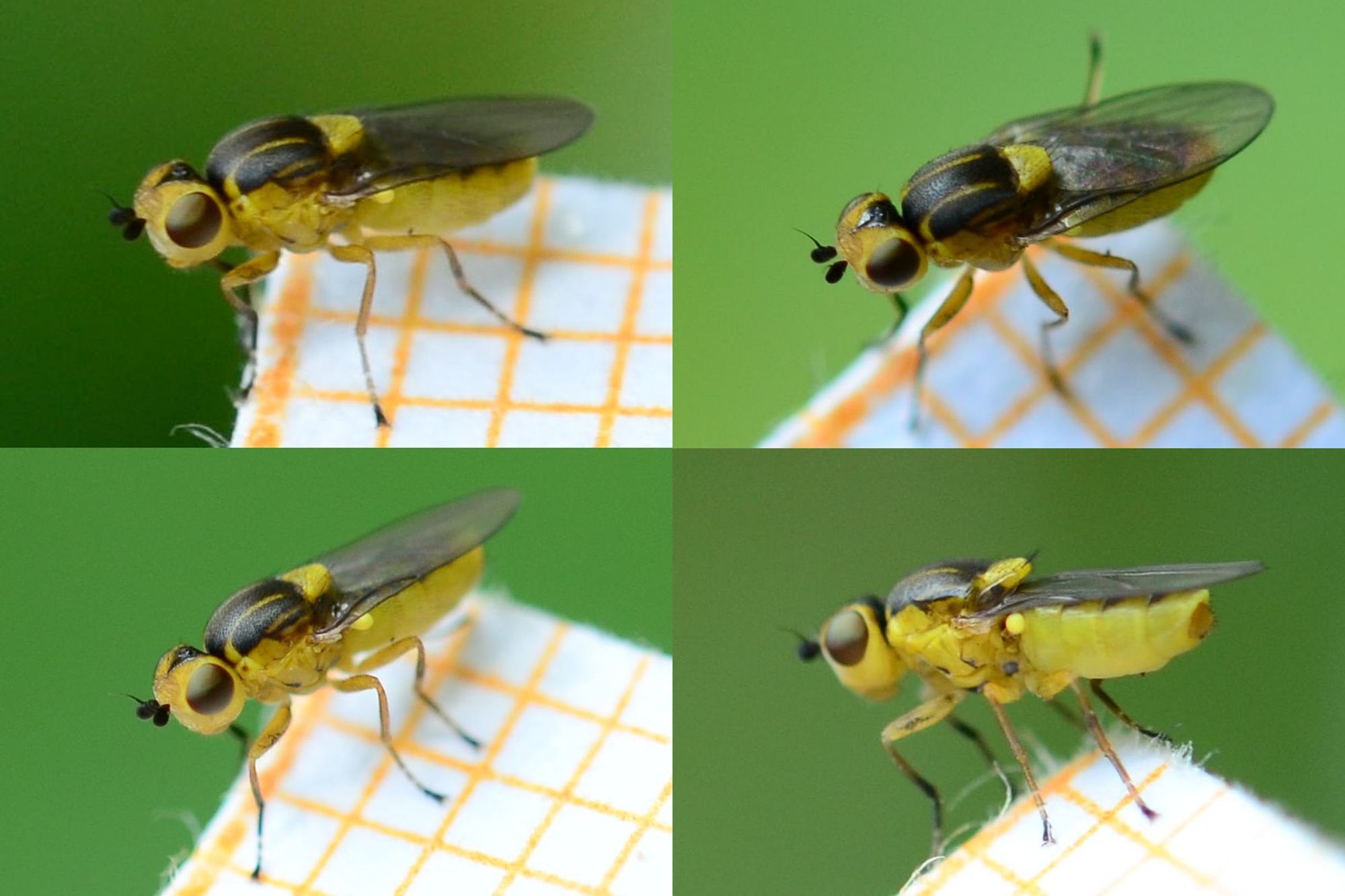Diptera.info :: Identification queries :: Diptera (adults)
Who is here? 1 guest(s)
|
Chloropidae – Clorops or more ID? --> Chlorops pumilionis
|
|
| kuv |
Posted on 26-02-2020 17:17
|
|
Member Location: Schenefeld near Hamburg Posts: 3678 Joined: 30.04.10 |
Northern Germany, Schleswig-Holstein, Schenefeld near Hamburg, hedge with a drainage ditch between a playground and a field of a nursery school for trees, grown up with bushes like Corylus, Acer sp, Salix and other, at a leaf of Prunus sp., 7th of May 2019, Outdoorphotos: kuv. Please help me to get the ID (I know it's very difficult). Kuv [Click to enlarge the pictures!] kuv attached the following image:  [203.15Kb] Edited by kuv on 14-12-2020 21:24 |
|
|
|
| kuv |
Posted on 26-02-2020 17:18
|
|
Member Location: Schenefeld near Hamburg Posts: 3678 Joined: 30.04.10 |
2nd picture:
kuv attached the following image:  [201.85Kb] |
|
|
|
| kuv |
Posted on 20-04-2020 09:44
|
|
Member Location: Schenefeld near Hamburg Posts: 3678 Joined: 30.04.10 |
Please one more chance to ID Greetings Kuv |
|
|
|
| kuv |
Posted on 08-09-2020 10:17
|
|
Member Location: Schenefeld near Hamburg Posts: 3678 Joined: 30.04.10 |
Nobody an idea to more ID? Greetings Kuv |
|
|
|
| John Carr |
Posted on 08-09-2020 14:42
|
|
Member Location: Massachusetts, USA Posts: 10193 Joined: 22.10.10 |
Close to Chlorops (costa ends at R4+5, thorax with black stripes, and not showing the modifications to legs or antennae of other genera of Chloropinae). |
| kuv |
Posted on 08-09-2020 16:56
|
|
Member Location: Schenefeld near Hamburg Posts: 3678 Joined: 30.04.10 |
Thank you very much John  - I'll change title to "Clorops ?" - I'll change title to "Clorops ?"Greetings Kuv |
|
|
|
| kuv |
Posted on 13-12-2020 17:06
|
|
Member Location: Schenefeld near Hamburg Posts: 3678 Joined: 30.04.10 |
I'm still waiting ... Greetings Kuv |
|
|
|
| von Tschirnhaus |
Posted on 14-12-2020 16:30
|
|
Member Location: Bielefeld, Germany Posts: 450 Joined: 04.11.07 |
Chlorops pumilionis (Bjerkander, 1778), Chloropidae, the most abundant Chlorops species in Europe, in this case a very dark specimen. Best characteristics for the identification are the distinctly darkened ends of fore tibia, very deep (= wide) gena (deeper than height of third antennal segment), completely black antenna. After my database 547 monographs and dissertations deal with this agricultural pest, 1026 publications altogether. |
| kuv |
Posted on 14-12-2020 21:22
|
|
Member Location: Schenefeld near Hamburg Posts: 3678 Joined: 30.04.10 |
Woooow, thank you very much Mr. von Tschirnhaus. That's a very good message. Best regards Kuv |
|
|
|
| Jump to Forum: |















